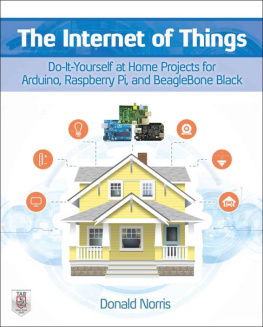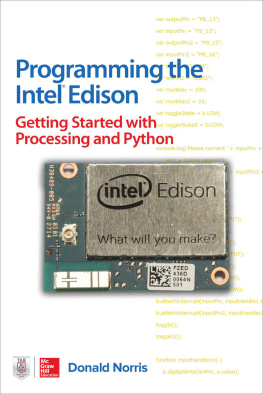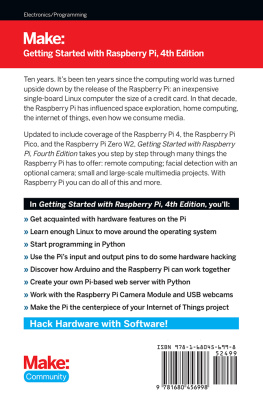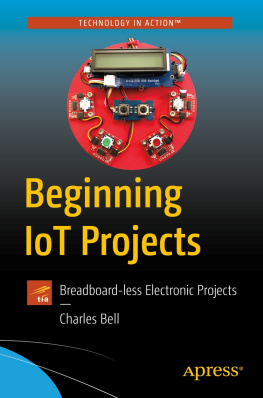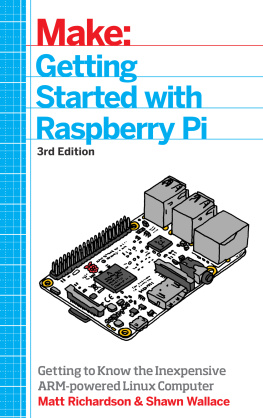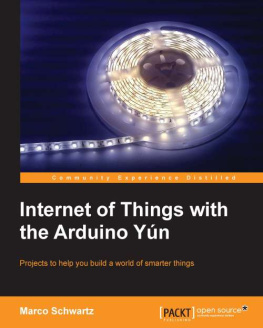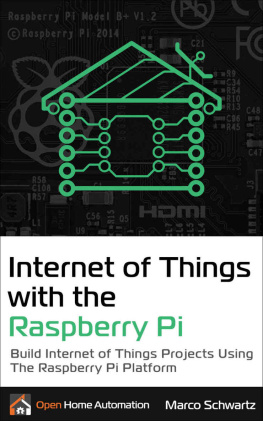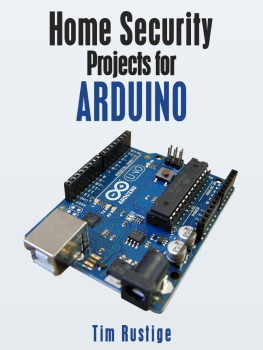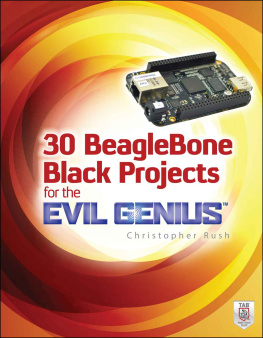
Copyright 2015 by McGraw-Hill Education. All rights reserved. Except as permitted under the United States Copyright Act of 1976, no part of this publication may be reproduced or distributed in any form or by any means, or stored in a database or retrieval system, without the prior written permission of the publisher, with the exception that the program listings may be entered, stored, and executed in a computer system, but they may not be reproduced for publication.
ISBN: 978-0-07-183521-3
MHID: 0-07-183521-0
The material in this eBook also appears in the print version of this title: ISBN: 978-0-07-183520-6, MHID: 0-07-183520-2.
eBook conversion by codeMantra
Version 1.0
All trademarks are trademarks of their respective owners. Rather than put a trademark symbol after every occurrence of a trademarked name, we use names in an editorial fashion only, and to the benefit of the trademark owner, with no intention of infringement of the trademark. Where such designations appear in this book, they have been printed with initial caps.
McGraw-Hill Education eBooks are available at special quantity discounts to use as premiums and sales promotions or for use in corporate training programs. To contact a representative, please visit the Contact Us page at www.mhprofessional.com.
Information has been obtained by McGraw-Hill Education from sources believed to be reliable. However, because of the possibility of human or mechanical error by our sources, McGraw-Hill Education, or others, McGraw-Hill Education does not guarantee the accuracy, adequacy, or completeness of any information and is not responsible for any errors or omissions or the results obtained from the use of such information.
TERMS OF USE
This is a copyrighted work and McGraw-Hill Education and its licensors reserve all rights in and to the work. Use of this work is subject to these terms. Except as permitted under the Copyright Act of 1976 and the right to store and retrieve one copy of the work, you may not decompile, disassemble, reverse engineer, reproduce, modify, create derivative works based upon, transmit, distribute, disseminate, sell, publish or sublicense the work or any part of it without McGraw-Hill Educations prior consent. You may use the work for your own noncommercial and personal use; any other use of the work is strictly prohibited. Your right to use the work may be terminated if you fail to comply with these terms.
THE WORK IS PROVIDED AS IS. McGRAW-HILL EDUCATION AND ITS LICENSORS MAKE NO GUARANTEES OR WARRANTIES AS TO THE ACCURACY, ADEQUACY OR COMPLETENESS OF OR RESULTS TO BE OBTAINED FROM USING THE WORK, INCLUDING ANY INFORMATION THAT CAN BE ACCESSED THROUGH THE WORK VIA HYPERLINK OR OTHERWISE, AND EXPRESSLY DISCLAIM ANY WARRANTY, EXPRESS OR IMPLIED, INCLUDING BUT NOT LIMITED TO IMPLIED WARRANTIES OF MERCHANTABILITY OR FITNESS FOR A PARTICULAR PURPOSE. McGraw-Hill Education and its licensors do not warrant or guarantee that the functions contained in the work will meet your requirements or that its operation will be uninterrupted or error free. Neither McGraw-Hill Education nor its licensors shall be liable to you or anyone else for any inaccuracy, error or omission, regardless of cause, in the work or for any damages resulting therefrom. McGraw-Hill Education has no responsibility for the content of any information accessed through the work. Under no circumstances shall McGraw-Hill Education and/or its licensors be liable for any indirect, incidental, special, punitive, consequential or similar damages that result from the use of or inability to use the work, even if any of them has been advised of the possibility of such damages. This limitation of liability shall apply to any claim or cause whatsoever whether such claim or cause arises in contract, tort or otherwise.
This book is dedicated to my wonderful parents, Harry and Esther Norris,
who provided the love and support to enable me to become the person that I am today.
I would also like to dedicate the book to my inspiring high school physics teacher, Mr. Bluhm, who instilled in me a love for science, especially physics, that still burns within me.
About the Author
Donald Norris has a degree in electrical engineering and an MBA with a specialization in production management. He is currently teaching both undergraduate and graduate IT courses at Southern New Hampshire University. He has also created and taught several robotics courses there. He has over 30 years of teaching experience as an adjunct professor at a variety of colleges and universities.
Mr. Norris retired from civilian government service with the U.S. Navy, where he specialized in acoustics related to nuclear submarines and associated advanced digital signal processing. Since then, he has spent more than 20 years as a professional software developer using C, C#, C++, Python, and Java, as well as 5 years as a certified IT security consultant.
Mr. Norris started a consultancy, Norris Embedded Software Solutions (dba NESS LLC, www.nessllc.net), that specializes in developing application solutions using microprocessors and microcontrollers. He likes to think of himself as a perpetual hobbyist and geek and is always trying out new approaches and out-of-the-box experiments. He is a licensed private pilot, active member of the Civil Air Patrol, photography buff, amateur radio operator, and avid runner.
He is also the author of two other McGraw-Hill Tab books Raspberry Pi Projects for the Evil Genius and Build Your Own Quadcopter.

Contents at a Glance

Contents

Acknowledgments
P roject books such as this one are never created in a vacuum. They are a product of the authors insight, creativeness, and most important, an integration of the vast resources available in the open-source community. I have tried to be true to the spirit of open source and acknowledge all the fine contributions to the technology that I have incorporated into this book. I humbly apologize if Ive missed someones contribution.
I also wish to acknowledge the fine support and encouragement that I have received and continue to receive from my colleagues at Southern New Hampshire University. This books content is also presented in a new undergraduate IT course, which reflects SNHUs innovative spirit.

Introduction
I suppose the genesis of this book was from long-term interest in connecting computers to the Internet. Back in the early 1990s, I experimented with a variety of single-board computers that would connect, in a fashion, to the Internet and serve up relatively simple web pages. They didnt have the sophistication or capabilities of todays single-board systems exemplified by the Raspberry Pi or the BeagleBone Black boards. But they worked and provided useful platforms to experiment using simple computing devices in lieu of full-scale PC-based servers or desktop clients. Roll forward almost twenty years and there are now quite a few highly capable and functional systems, which can easily fulfill the promise of the Internet of Things, or IoT for short. I describe the IoT in the first chapter in yet another attempt at defining a somewhat nebulous phrase, which truly means different things to different people. I also took a somewhat different approach with this IoT book in that I used three separate platforms to implement the various demonstration projects. My initial thought was to demonstrate how one platform could have strengths in one area while another would be better suited to another area. However, what I found was that the platforms had much more in common than they were different. In fact, the Raspberry Pi and the BeagleBone Black boards are just about identical from a software prospective. Let me now present a glimpse into what awaits you in this book.
Next page
